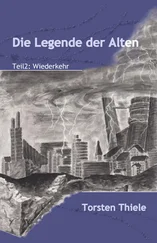But not cold, for the water temperature was fifty-seven degrees and still rising.
As we descended to twenty-two hundred feet, a gray haze began to appear, chasing away Vostok’s denizens of the deep.
At twenty-four hundred feet, the water temperature had risen to sixty-three degrees.
Forty more feet and I saw the first black smoker.
Hydrothermal vents were first discovered in the Pacific Ocean back in 1977. Since then, they had been found in every ocean as well as in certain rift lakes.
Vostok was just such a lake, formed when East Antarctica’s crustal plates had separated, creating a valley that became the waterway’s basin. The geothermal vents were switched on when cold water began seeping into cracks along the forming lake’s floor. Heated by molten rock in the earth’s mantle, the water mixed with oxygen, magnesium, potassium, and other minerals before being forcibly ejected back into the lake. Once this hot mineral soup met Vostok’s cold, oxygen-rich water, it generated hydrogen sulfide, which in turn fueled bacteria — the foundation of the lake’s chemosynthetic food chain.
Avoiding direct contact with the superheated discharges, Ben gave us a tour of the vent field, a petrified forest of volcanic chimneys that spewed billowing dark clouds of mineral-laden water, which spawned a thriving subglacial ecosystem. Piled along the base of these vents was a mosh-pit of life — crustaceans and shrimp, clams and anemone — everything white and twice the size of similar species outside of Vostok. Our sub rocked in eighty-nine-degree water as we passed over miles of vent fields, small fish feeding off the spaghetti-like clusters of tubeworms that grew in acre-size clusters.
“All right, Zach, Ming — we’ve taken a look. What say we move on before this mineral water clogs one of the engine’s intake valves?”
Not waiting for our reply, Ben began our ascent as we continued our trek to the northeast.
We had journeyed another three nautical miles when we discovered another missing cog in Vostok’s thriving ecosystem.
Upon reaching a depth of 420 feet, we discovered strands of what appeared to be kelp dangling across our cockpit glass. The higher we rose, the denser the growth, until we were surrounded by thick strands of algae.
As we continued our ascent, sonar revealed the lake’s surface had been replaced by a thick algae mat that carpeted Vostok’s lake for miles.
“This is bizarre,” I said. “A kelp forest is usually rooted to the bottom. This forest is upside down. Its holdfast is growing out of the geothermal soil and algae that has accumulated along the surface.”
Ben kept the Barracuda eighty feet beneath the mineralized surface, fearful of the Valkyrie units becoming entwined in long strands of kelp.
Everywhere we looked, there were fish.
Hundreds of Miocene rockfish dominated the shallows, their six-foot-long frames carrying a good hundred pounds. They must have been blind, for they remained unaffected by our exterior lights. Their thick hides were a bright orange, rendering the inverted vines a Miocene pumpkin patch.
“This is incredible. Ming, I hope you’re getting this. Ming?”
I turned to find her chair spun around as she hovered over the rear instrument panel. “It was recording perfectly until a few moments ago, but now the image is pixelating.”
“It must be that magnetic interference. We’re probably close to the plateau.”
“Good,” Ben said. “Once we cross the plateau we’ll be in the northern basin, and the magnetic interference should pass. Looks like we won’t be getting there along the surface, though. Guess it’s back down to the basement.”
“Wait,” I said. “Are you able to get an atmospheric pressure reading?”
“Give me two minutes.”
Before I could object, Ben had powered up the Valkyries, igniting the kelp strands in front of us. Within seconds we were rising through clear water, the lasers evaporating plants and barbequing fish as they burned a hole through the soil-covered surface.
Ming was livid. “You maniac. Look what you did!”
“What did you want me to do? We needed a place to surface, now we have one. No one needs to know.”
“That is not the point. We did not journey into this pristine environment to destroy a fifteen-million-year-old ecosystem.”
“Don’t go all PETA on me, Ming. So I fried a few fish. Big deal. The dead will be eaten, and the algae will grow back.”
Before she could retort, the Barracuda ’s bow punched through the smoldering mattress of vegetation. The sub leveled out in the midst of a midnight fog swirling beneath a cloudlike ceiling of ice at least twenty stories high.
While Ben swore at the ice sheet and Ming swore at Ben, I used my night-vision binoculars to survey our new surroundings.
We were surrounded by a thick, undulating bed of vegetation. To the north the surface layer progressively expanded into a dark, lumpy moss and what appeared to be tens of thousands of snakes. After adjusting my focus, I realized they were roots growing out of the marsh. With no sun to reach for, the growths had twisted horizontally into thick briar patches, nourished solely by the chemosynthetic-rich soil.
Farther out still, I saw the dark silhouette of a rise.
Ben and Ming were still arguing in my headphones, distracting my thoughts. “Enough,” I yelled, silencing the voices in my ears. “Ben, I thought the plateau that divides the lake’s northern and southern basin was underwater.”
“Depth is seven hundred feet, according to Vostok Command. Why?”
“Because there’s a ridge out there preventing us from entering the northern basin, and it’s definitely not submerged.”
My two shipmates located their binoculars and panned the northern horizon.
Ming didn’t seem too surprised. “At least three nations studying Vostok claim the lake has islands and tides. Perhaps these radar scans were completed at low tide and confused the partially submerged ridge for islands.”
Ben angrily shoved his binoculars back in their pouch. “Maybe Vostok does have tides, or maybe somebody just screwed up. If a high tide is coming, it’d better get here soon. Otherwise we have about nine and a half hours to figure out how to cross a land bridge in a submersible.”
“There’s something else,” I said. “The external air pressure has dropped again, this time from thirty-nine hundred psi to just over four hundred. That’s a massive pressure differential.”
Ming theorized. “The geothermal vents heated the water. The warmth melted the ice, which carved out the bottom of the ice sheet, creating more air space. That space filled with compressed oxygen and nitrogen particles, which are perpetually being squeezed to the bottom of the glacier. It is this atmosphere that is counteracting Vostok’s external pressure.”
“That doesn’t explain the magnetic interference that’s scrambling your cameras. Ben, as much as I’d like to believe in the tides, I think you’d better take us deep. Maybe we can find an underwater passage that leads into the northern basin.”
The Barracuda slipped beneath the algae mat and descended.
Dancing in and out of our exterior lights was bio-diversity on a scale I had never seen before. There was the kelp forest — a million inverted olive-brown tentacles swaying with the current. Then there were the kelp-feeders — anchovies and mollusks, along with countless other dark creatures. Finally, there were the packs of carnivore fish, their presence attracting a few rogue predators.
Perhaps it was to keep Ming on his good side, but Ben made a special effort to maneuver the sub so as not to disturb the wildlife. At one point he even diverted from our descent so that Ming could collect samples of kelp and several anchovies using a vacuum tube.
Читать дальше












